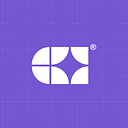Who is a product designer? A product designer is someone who manages the entire design process of a new product or the enhancement of an existing one.
A product designer is typically directed by the product management team based on a company’s mission and vision. A product designer is usually associated with the visual and physical components of a product, but it is noteworthy that they also help define information architecture and system design.
The following are the roles of a Product Designer;
Designing: The primary job of a product designer is to design. A product designer creates a product by applying knowledge of colour schemes, typography, shapes, texture, detail, and other design elements.
Researching: When creating a design, every designer considers the UX/UI principles. And it is not confined to creating a one-size-fits-all offering. To build a tailored experience, a product designer does extensive research using A/B testing, email surveys, wireframes and prototypes, journey maps, and other UX research tools.
Collaboration: A product designer must collaborate with other researchers, designers, and business stakeholders to ensure a design that aligns with the company’s goals as well as assimilate all the processes necessary to make the product user-friendly.
Skills Product Designers Need to Hone
Let’s look at some essential skills a product designer should have:
Research skills: The basis of every design project is research. Understanding the user is the most important factor when developing a user experience. In order to obtain more pertinent data about the users, a product designer must be prepared to perform quantitative and qualitative studies. Some essential talents to have included are interviewing, usability testing, creating prototypes and mock-ups, as well as creating demographics and personas.
Data analytics: By examining the data from the research, product designers can find new or better ways to design a product’s layout, features, and appearance. Their ability to analyze data can contribute to the development of interesting products.
Wireframes and prototyping: These techniques help assess and validate a product’s features with users by giving ideas in a concrete form. To comprehend or explain the concept, a product designer must have knowledge of prototyping. If carried out properly, this procedure can assist a design team in receiving feedback on their work.
Graphic Designing: On the artistic side, a product designer takes care of icons, logos, and other elements. From colour schemes to pixel-perfect resolutions, a product designer should have proficiency in every aspect of visual matters. From a design perspective, a product designer knows some popular tools like Figma, Sketch, or Adobe Creative Suite.
While this article highlights the basics, we had a very enlightening conversation with a designer at Meta on the modules by the Enyata podcast; click here to listen.
